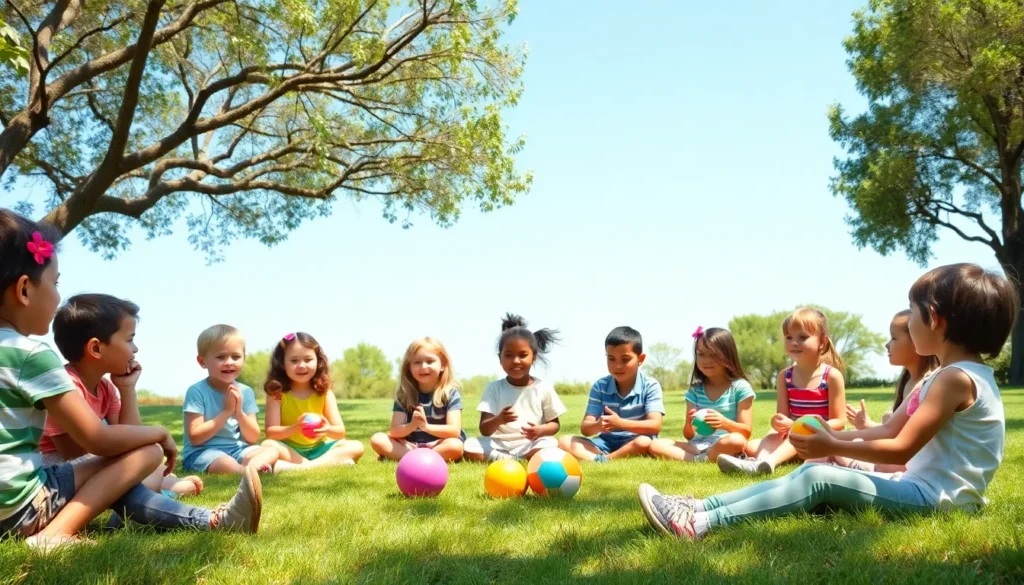Table of Contents
ToggleKids today face a whirlwind of pressures, from homework to social media drama. It’s no wonder stress has become a frequent visitor in their lives. But fear not—stress management isn’t just for adults in yoga pants sipping herbal tea. Kids can learn to tackle stress like pros, and it can be fun!
Understanding Stress in Children
Children encounter various stressors that contribute to their emotional and mental well-being. Understanding these stressors is crucial for effective management.
Common Causes of Stress in Kids
Academic pressures from homework and exams often lead to stress in children. Social dynamics, such as bullying or challenges in making friends, can increase anxiety levels. Family conflicts, including divorce or financial issues, also affect children’s emotional states. Additionally, extracurricular commitments, like sports or music, may overwhelm them. Finally, the pervasive influence of social media can create unrealistic expectations, intensifying stress.
Signs and Symptoms of Stress
Behavioral changes often indicate stress in children. Some might exhibit withdrawal or isolation from friends and family, while others may become more irritable or aggressive. Physical symptoms can manifest as headaches, stomach aches, or changes in appetite. Sleep disturbances, such as trouble falling asleep or nightmares, frequently occur. Academic performance may decline, reflecting their emotional struggles. Recognizing these signs is crucial for timely intervention and support.
Effective Stress Management Techniques

Kids face numerous stressors daily, making effective management essential. Various strategies can help them cope.
Breathing Exercises for Kids
Breathing exercises offer a simple way for children to reduce stress. Engaging in deep breathing promotes relaxation by slowing the heart rate. By inhaling for a count of four and exhaling for a count of six, kids can calm their minds. Practicing this for just a few minutes can lead to significant improvements in their emotional state. Games like “bubble breathing,” where they pretend to blow bubbles, make these exercises enjoyable. Incorporating such activities at home or school fosters a routine that supports stress relief.
Mindfulness Practices for Children
Mindfulness practices teach children to focus on the present moment. Techniques include guided imagery and body scanning, which reduce anxiety and enhance emotional awareness. Setting aside time for quiet reflection allows kids to connect with their thoughts and feelings. Using apps designed for children can make these practices accessible and fun. Regular engagement strengthens their coping skills and cultivates emotional resilience. Parents and educators play a crucial role in creating an environment that encourages mindfulness, helping kids thrive amidst stress.
Role of Parents in Stress Management
Parents play a crucial role in helping children manage stress effectively. They can guide children through challenges while fostering resilience and emotional wellbeing.
Open Communication with Children
Effective communication starts with active listening. When parents create an open dialogue, children feel safe sharing their feelings. Encouraging kids to express worries helps identify sources of stress. It’s essential to validate their emotions and reassure them that experiencing stress is normal. Regular conversations about daily experiences provide insight into a child’s emotional state and help parents address issues promptly. By being attentive and approachable, parents cultivate trust and make children more comfortable discussing their concerns.
Creating a Supportive Environment
A supportive environment promotes emotional safety and stability. Parents can establish routines that include time for relaxation and fun activities, which are essential for stress relief. Designating quiet spaces at home allows children to unwind and practice mindfulness techniques. Structured schedules help reduce anxiety related to unpredictability, assuring children know what to expect daily. Encouragement in pursuing hobbies also boosts self-esteem and provides healthy outlets for emotional expression. Overall, a nurturing atmosphere equips children with tools to handle stress constructively.
School’s Role in Stress Management
Schools play a vital role in supporting children’s stress management. Educators can implement stress management programs that teach coping strategies and promote overall well-being. These programs can include workshops, classroom activities, and resources focused on relaxation techniques and emotional regulation. Furthermore, integrating mindfulness practices into daily routines helps students manage anxiety effectively.
Implementing Stress Management Programs
Implementing stress management programs benefits students’ mental health. Schools can offer regular workshops that teach relaxation techniques, such as guided imagery and deep breathing. Integrating activities like yoga into physical education classes fosters a calm atmosphere. For example, hosting mindfulness sessions during the school day encourages students to take mindful breaks. Collaboration with parents enhances the program’s effectiveness, as families can reinforce these practices at home.
Training Staff to Identify Stress
Training staff to identify stress in students is essential for early intervention. Professional development can include recognizing behavioral changes and emotional distress signals. Offering workshops on stress management signs prepares teachers to support affected students adequately. Encouraging staff to engage in open discussions with students creates a trusting environment. Regular check-ins allow educators to monitor emotional well-being and address issues proactively.
Activities to Reduce Stress
Engaging in structured activities helps children manage stress effectively. Fun and interactive options allow kids to express emotions and channel energy positively.
Creative Outlets for Expression
Artistic activities like drawing, painting, or crafting provide children an interactive way to express their feelings. Music and dancing also serve as effective outlets, allowing kids to process emotions while enjoying themselves. Writing stories or keeping journals enables deeper self-reflection and emotional understanding, promoting mental well-being. In structured group settings, such as art classes or drama clubs, kids can connect with peers and share experiences, reinforcing social support.
Physical Activities and Their Benefits
Physical exercise plays a significant role in stress reduction for children. Activities like running, swimming, or playing team sports release endorphins, known as “feel-good” hormones, helping to elevate mood. Regular participation in yoga or martial arts not only improves physical health but also enhances focus, self-discipline, and emotional regulation. Group sports foster teamwork and friendships, supporting emotional resilience. Even simple outdoor play can promote relaxation while providing fresh air and social interaction, key components in managing stress effectively.
Managing stress in children is essential for their overall well-being. By understanding the pressures they face and recognizing the signs of stress, parents and educators can take proactive steps to support them. Implementing effective stress management techniques like breathing exercises and mindfulness practices creates a nurturing environment where children can thrive.
Encouraging open communication and providing structured activities not only helps kids cope with stress but also fosters emotional resilience. With the right tools and support, children can learn to navigate their challenges confidently. Investing in their emotional health today lays the foundation for a brighter and more balanced future.







